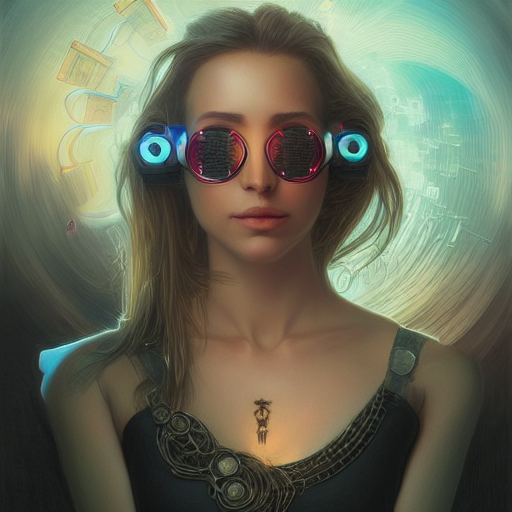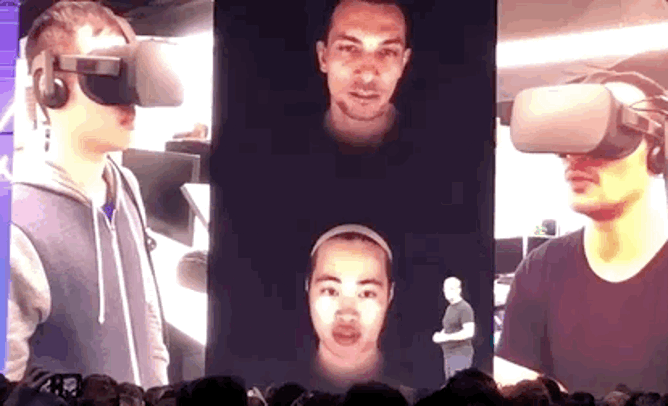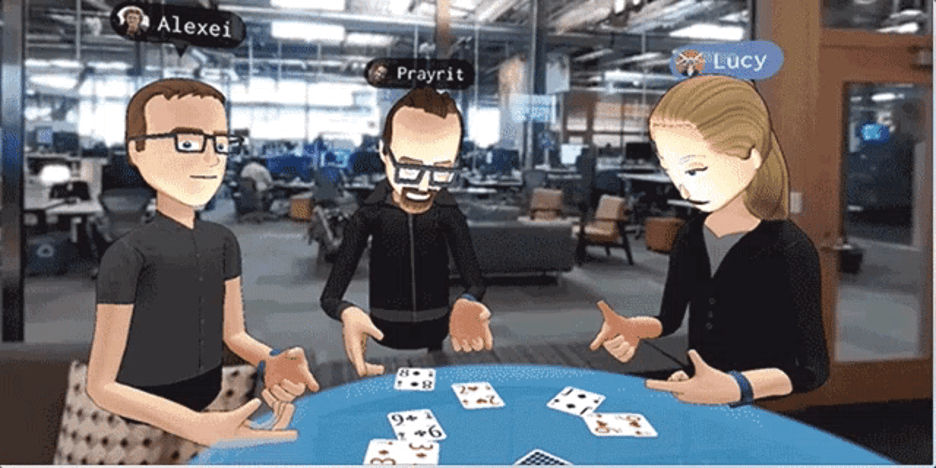The Metaverse: More Hype Than Substance?

The idea of the metaverse has been gaining momentum in recent years, becoming a catch-all buzzword used to describe different things in the digital landscape. What it means depends on who you ask. It could be VR social networks, online games with crypto assets, 3d communication spaces, or any virtual world. But is all the hype justified? In this essay, we’ll explore applications with good potential and also consider situations where it might not make sense.
When I tried the first-generation Oculus Quest, I was immediately impressed by the immersive feeling it created. One of my most remarkable experiences was with a visual meditation App. As I entered the virtual world, I found myself floating in space surrounded by beautiful colors. As I breathed, the air flowed in and out of my mouth and was represented by bright, colorful beams of light. The demo lasted for 7 minutes and, to my surprise, by the end of it, not only I felt more relaxed, but my heart rate had actually dropped by 9 bpm. Visibly, the format could provide a holistic stimulation of the senses in a way that classical settings may not be able to achieve.
The metaverse often refers to creations like Roblox, Sandbox, Facebook Horizon, and Second Life. Each of these platforms, however, has a different interpretation of the concept. For example, Sandbox defines itself as a world where players can build, own, and monetize their gaming experiences using the Ethereum blockchain. On the other hand, Facebook sees it as a future where VR and AR devices will replace smartphones as the primary way people interact with each other and the world, in a 3D virtual environment.
Perhaps, the trickiest part of the term is the word 'the'. It implies that it is the one new singular thing that will supplant the Internet. Nevertheless, in reality, we are witnessing the emergence of multiple 'metaverse(s)' that exist in parallel. Consequently, it would be more accurate to refer to the metaverse as a 'type' or 'format' rather than a distinct realm that will replace the Internet.
Assuming the definition of 'format', metaverse(s) could then be ways for businesses to reimagine part of our lives in 3d virtual spaces. With this framing in mind, would this kind of structure ever take a significant portion of our attention? What type of activities would we want to spend time doing in there? And will the experience always be better than with traditional interfaces?
Virtual environments do offer a deeply immersive experience, providing a chance to explore and engage with places that may be impractical or even impossible to visit in the real world. From far-off planets to ancient ruins, we can virtually visit these locations and interact with each other. The opportunity to attend live events, such as concerts, and experience the feeling of being in a packed stadium without physically being there is another appealing side. The convenience of interactive 3D worlds also has the potential to benefit education and offer a safe space to practice for real-world situations without any risk.

One of the most impactful aspects may be the ability to interact with each other using photorealistic avatars, as recently demonstrated by Facebook. These avatars can enhance online interactions by making them feel more like in-person meetings, fostering a deeper sense of connection than a video call could ever provide. This could improve both business and personal encounters.
Once the development is completed, the virtual meeting experiences will be much more appealing than the current demos featuring cartoonish avatars without legs.

The examples above indicate that 3D worlds can bring an enhanced capability in some instances. When the hardware becomes lightweight enough, people may opt to interact in this manner for certain activities rather than using computer and mobile screens.
But will most of our daily activities work better in 3D immersive worlds?
In other words, are we moving toward the scenario from the sci-fi novel Ready Player One?
I believe, the hype surrounding the metaverse is likely misguided due to a flawed assumption. While the format may work pretty well for certain actions, the idea that every aspect of our physical and digital lives will be transferred to a three-dimensional virtual environment is unrealistic.
Take the example of shopping. It has traditionally involved going to physical stores to buy products. However, the rise of e-commerce has made it possible to purchase almost anything without leaving home. But is it necessary or even desirable to enter a virtual 3D shopping mall to buy groceries or clothes? In the case of groceries, a simple voice command to an assistant would provide a much better experience than walking around a virtual supermarket. And for clothing, the technology would be better used to show how the clothes would look in your photos rather than providing a virtual shopping environment. So overall, not only is immersion not necessary for regular shopping, but it could be detrimental.
Likewise, having to enter a virtual branch of a bank to make a wire transfer would not make sense. The same is true for tasks such as stock trading, booking flights, summoning a ride-sharing service, taking notes, managing one's schedule, creating a to-do list, writing, coding, listening to audio, learning to play an instrument, reading, paying bills, checking the weather, budgeting, ordering food delivery, tracking a package, finding a recipe, and cooking a meal or scheduling a doctor's appointment. And that’s only a sampling of what people do on a regular basis.
Virtual worlds are not suitable for activities that do not benefit from a spatial setting. But even for actions that could fit a spatial representation, there are still parts that cannot be adequately replicated. For example, while generating a convincing 3D version of a guitar or piano is trivial, it is not yet feasible to recreate the tactile effect required for the hands to learn to play the instruments. The lack of a realistic sense of touch makes many other day-to-day activities either unachievable or significantly less enjoyable. The same is true for the senses of taste and smell.
What about Augmented Reality?
Some may state that the metaverse concept would be too narrow if it were only seen as a VR space. The argument is the metaverse is also about a blended version of virtual and physical worlds through augmented reality.
For now, the available AR devices, such as Microsoft HoloLens and Magic Leap, have been repurposed to focus on a small subset of industrial domains like medical, defense, and manufacturing. So far, they have had a little uptake. After 6 years, only ~300,000 units of HoloLens were sold versus almost 15 million Oculus Quest 2. Nonetheless, AR devices will get smaller, lighter, and cheaper over time, which may render them accessible for more mainstream usage.
Pokemon Go was a fascinating experiment that got people hooked on chasing virtual creatures around their neighborhoods and didn't even require dedicated glasses. So maybe there's some appetite for augmented activities. The earlier example about learning an instrument in VR would actually work better in AR. A person practicing the piano could use a real instrument and have visual guidance overlayed on the keyboard, showing which key should be hit next. We can also imagine AR dating scenarios where users can show their profiles to others while navigating the city. This way, they might see potential matches as they go about their day.
Thus, there is room for augmented experiences where not completely disconnecting from reality may be more effective than fully immersing ourselves in a virtual world.
But the burning questions remain: will this be our preferred primary way of interacting with the world for all day-to-day activities? And will our delicate brains be able to handle a permanent visual stimulation directly projected onto our eyes?
Mobile phones give us the ability to decide when to view our screens and when to ignore them. Still, we struggle with an overwhelming avalanche of notifications and an endless stream of information. It reached a point where operating systems now offer a 'focus mode' that helps reduce the amount of data we see as well as a 'screen time' chart to monitor our usage.
This concept video shows an extreme AR scenario.
While anecdotal, it may not be that extreme and does make a good point prompting us to consider whether we would want to live in that kind of world.
As mobile devices replaced desktop computers, we traded larger screens and deeper immersion for greater accessibility. With the current issues of information overload and screen addiction, we may end up choosing to move further in that direction with even smaller screens and less immersion. Smartwatches paired with voice-based user interfaces may be the next typical setup. With artificial intelligence making significant progress in language understanding, it is possible that many user interfaces that previously required displays could be replaced by vocal conversational interactions.
So, what if instead of using augmented reality to see more, we could use technology to see even less by having smarter ways to access and interact with data? Doing so would preserve the health of our brains and our attention spans. We may also find ourselves better able to focus on tasks and engage in creative work without being constantly bombarded by a permanent external stimulus.
The metaverse, as currently imagined, may not become the center of our lives. Yet, it holds the potential to enhance traditional interactions with its immersive and augmented experiences for a subset of activities. So, will it revolutionize the way we live at some point in the future? Or will it be relegated to a mere novelty? We'll have to check again in about a decade. For now, I remain skeptical.
